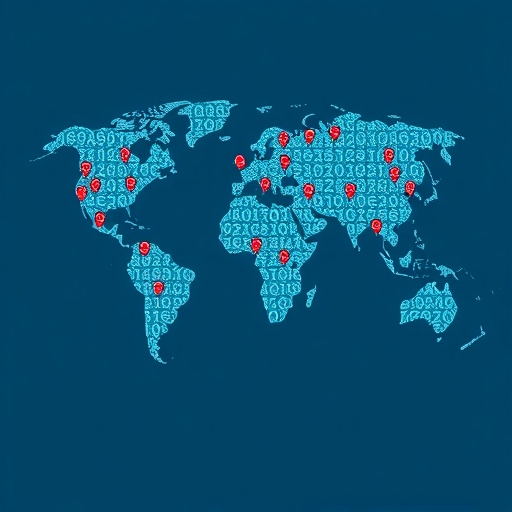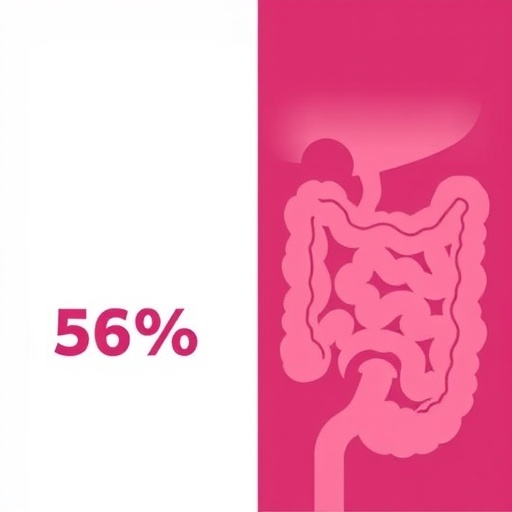
In a transformative study examining the intersection of advanced imaging techniques and cancer pathology, researchers have unveiled significant correlations between magnetic resonance imaging (MRI) radiomics and the tumor microenvironment in uterine cervical cancer. This nuanced exploration, led by an accomplished team including Meyer, Leonhardi, and Höhn, sheds light on the potential for MRI technologies to refine cancer diagnosis and treatment outcomes significantly. Understanding the unique characteristics of tumor ecosystems is crucial for both predicting prognosis and tailoring individualized therapies for patients.
Radiomics, a discipline that harnesses quantitative data extracted from medical imaging, has emerged as a powerful tool in oncology. The approach allows medical professionals to visualize and quantify the intricate features of tumors that may not be discernible through traditional imaging techniques. By utilizing sophisticated algorithms, MRI radiomics generates a plethora of quantitative imaging biomarkers that can provide insights into the underlying biology of tumors. This cutting-edge application has the potential to revolutionize how oncologists interpret imaging data, moving from a purely observational practice to a more predictive and personalized approach.
In the context of cervical cancer, the microenvironment surrounding tumors plays a pivotal role in determining tumor behavior, treatment resistance, and overall prognosis. The tumor microenvironment is a complex ecosystem composed of cancer cells, immune cells, blood vessels, and extracellular matrix components that interact dynamically. These interactions can influence tumor growth and metastasis, making it imperative that researchers and clinicians alike understand these relationships to enhance treatment strategies. This study, published in the esteemed Journal of Cancer Research and Clinical Oncology, meticulously explores how MRI radiomics correlates with the characteristics of the tumor microenvironment, potentially paving the way for enhanced predictive models.
Researchers found that specific radiomic features were associated with markers of inflammation and immune response within the tumor microenvironment. These findings suggest that the information gleaned from MRI scans could provide critical context regarding the biological behavior of cervical tumors. For instance, certain radiomic patterns can indicate the presence of immunosuppressive cells or heightened inflammation, which might influence the effectiveness of immunotherapies. Knowledge of such correlations empowers oncologists to make more informed decisions about treatment options, particularly as the field shifts increasingly toward personalized medicine.
The study’s outcome is instrumental in harnessing imaging data to improve patient outcomes, particularly in a landscape where targeted therapies and immunotherapies are gaining ground. The integration of radiomics with other biomarkers could enhance the ability to stratify patients based on their risk profiles, ensuring that those most likely to benefit from aggressive treatment receive it, while others may be spared the side effects of therapies that are unlikely to succeed. The adept application of MRI radiomics thus serves not only as an imaging tool but also as a compass guiding therapeutic decisions.
However, despite the promise of MRI radiomics, significant challenges remain in the field. The reliance on high-quality imaging, variations in interpretation across different institutions, and the need for large validation studies are crucial obstacles that researchers must overcome. Standardization of imaging protocols and radiomic extraction methodologies will be vital to Ubiquitously implementing this innovative approach in clinical practice. Multi-center collaborations and large-scale cohort studies may help bridge these gaps, ensuring that the findings can be generalized across diverse populations and healthcare settings.
The implications of such research extend beyond cervical cancer alone. The fundamental principles of integrating MRI radiomics with tumor microenvironment assessments could be extrapolated to other malignancies, advancing the understanding of tumor biology across cancers. As such, ongoing investigations that seek to confirm and expand these findings will be critical in establishing MRI radiomics as a cornerstone in contemporary oncology.
The research methodology employed in this study illustrates the rigor necessary to validate the relationship between MRI radiomics and cancer pathology. The use of advanced imaging algorithms and machine learning techniques provides a robust framework for uncovering associations that may be missed through conventional analysis. By employing multifaceted statistical approaches, the authors were able to delineate connections between specific MRI characteristics and various components of the tumor microenvironment, leading to an enriched understanding of tumor behavior.
Moreover, the synergy between imaging, pathology, and clinical variables cannot be overlooked. The findings advocate for an interdisciplinary approach whereby radiologists, pathologists, and oncologists collaborate in interpreting data derived from MRI radiomics. Such collaboration will facilitate a holistic understanding of cancer evolution and inter-tumoral heterogeneity, ultimately improving patient care pathways.
As the landscape of cancer research evolves, the integration of artificial intelligence and machine learning into radiomics will further enhance the predictive capacity of imaging analysis. Technological advancements will likely lead to the development of even more sophisticated algorithms that can process imaging data at unprecedented speeds and accuracies. This trajectory indicates a future where decision-making in oncology is not only faster but also more evidence-based and tailor-made to the individual patient’s needs.
Looking ahead, it will be crucial to disseminate these findings beyond academic circles. Engaging healthcare practitioners, policymakers, and funding bodies in discussions about the potency of MRI radiomics in personalized medicine is necessary to propel this field forward. By fostering awareness and understanding among stakeholders, the research community can amplify the translation of these findings into clinical practice, enhancing the potential for improved patient outcomes.
In summary, the groundbreaking research conducted by Meyer and colleagues offers promising insights into the intersection of MRI radiomics and the tumor microenvironment in uterine cervical cancer. It paves the way for a future where precise imaging methods can inform more personalized treatment regimens, which could dramatically change the standard of care for patients battling this challenging disease. As the research community continues to unravel the complexities of cancer biology, the marriage of imaging technology with tumor pathology represents a significant leap toward more effective and individualized cancer therapies.
Through their bold exploration of these interconnections, the authors highlight the vital role that advanced imaging technologies can play in reshaping oncology. As we stand on the brink of a new era in cancer treatment and diagnosis, the promise of MRI radiomics will undoubtedly drive innovations that will better combat one of society’s most formidable health challenges.
Subject of Research: MRI radiomics analysis and tumor micro milieu in uterine cervical cancer.
Article Title: Associations between MRI radiomics analysis and tumor-micro milieu in uterine cervical cancer.
Article References:
Meyer, HJ., Leonhardi, J., Höhn, AK. et al. Associations between MRI radiomics analysis and tumor-micro milieu in uterine cervical cancer. J Cancer Res Clin Oncol 151, 219 (2025). https://doi.org/10.1007/s00432-025-06253-3
Image Credits: AI Generated
DOI: 10.1007/s00432-025-06253-3
Keywords: MRI radiomics, cervical cancer, tumor microenvironment, personalized medicine, imaging biomarkers.
Tags: advanced algorithms in medical imagingadvanced imaging techniques in oncologycervical cancer prognosis factorscorrelation between imaging and pathologyinnovative approaches to cancer treatmentinsights into tumor ecosystemsMRI radiomics in cervical cancerpersonalized therapy in cervical cancerpredictive biomarkers for cancer treatmentquantitative imaging in cancer diagnosistumor behavior and treatment resistancetumor microenvironment analysis




